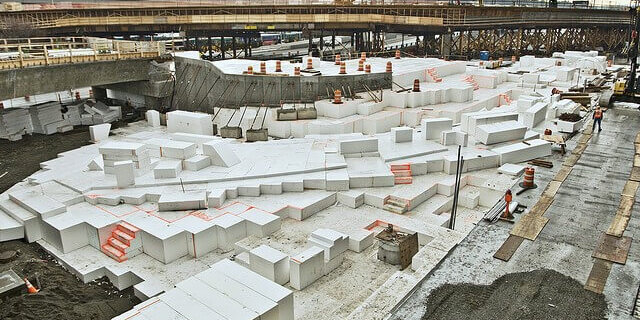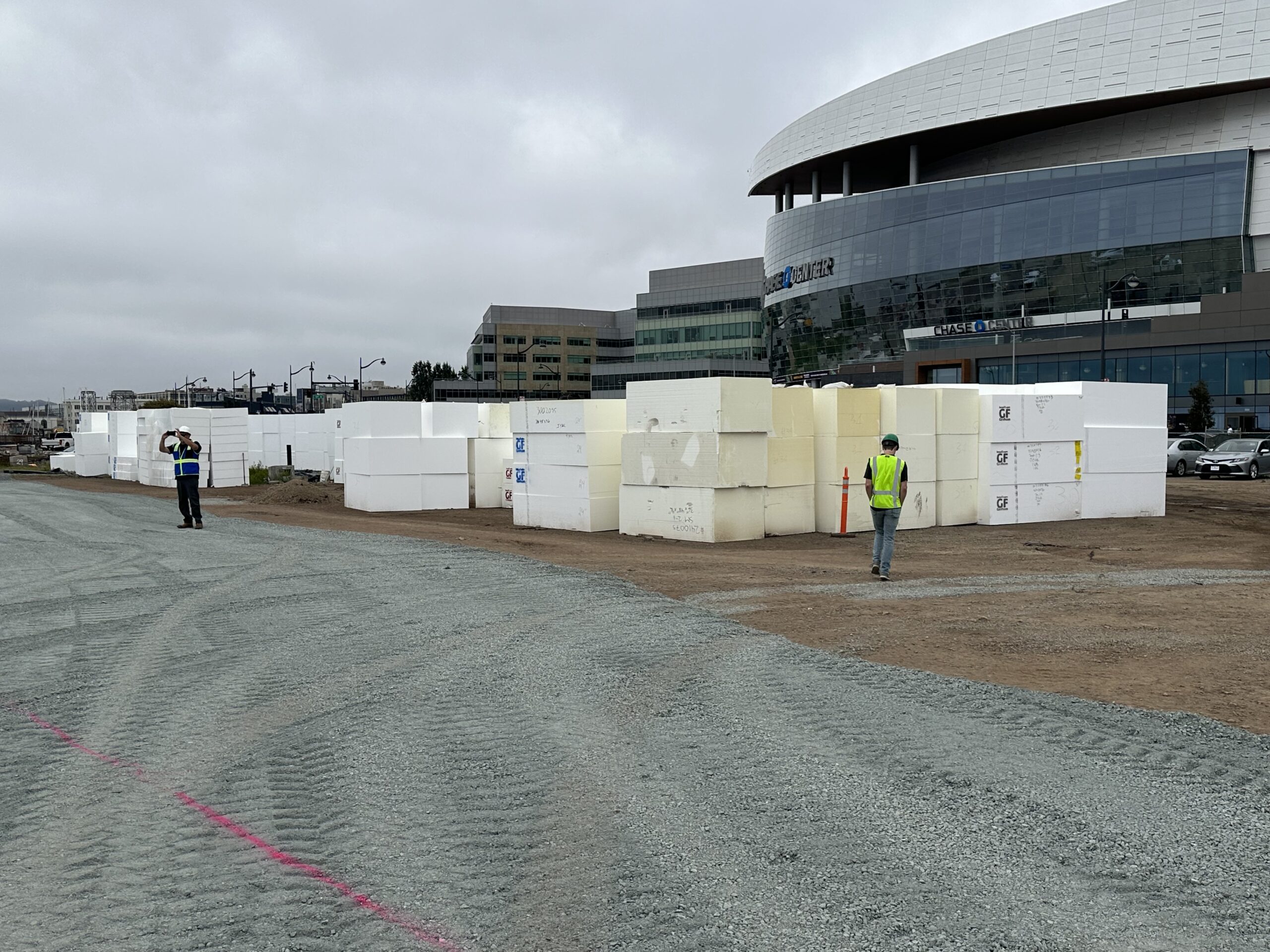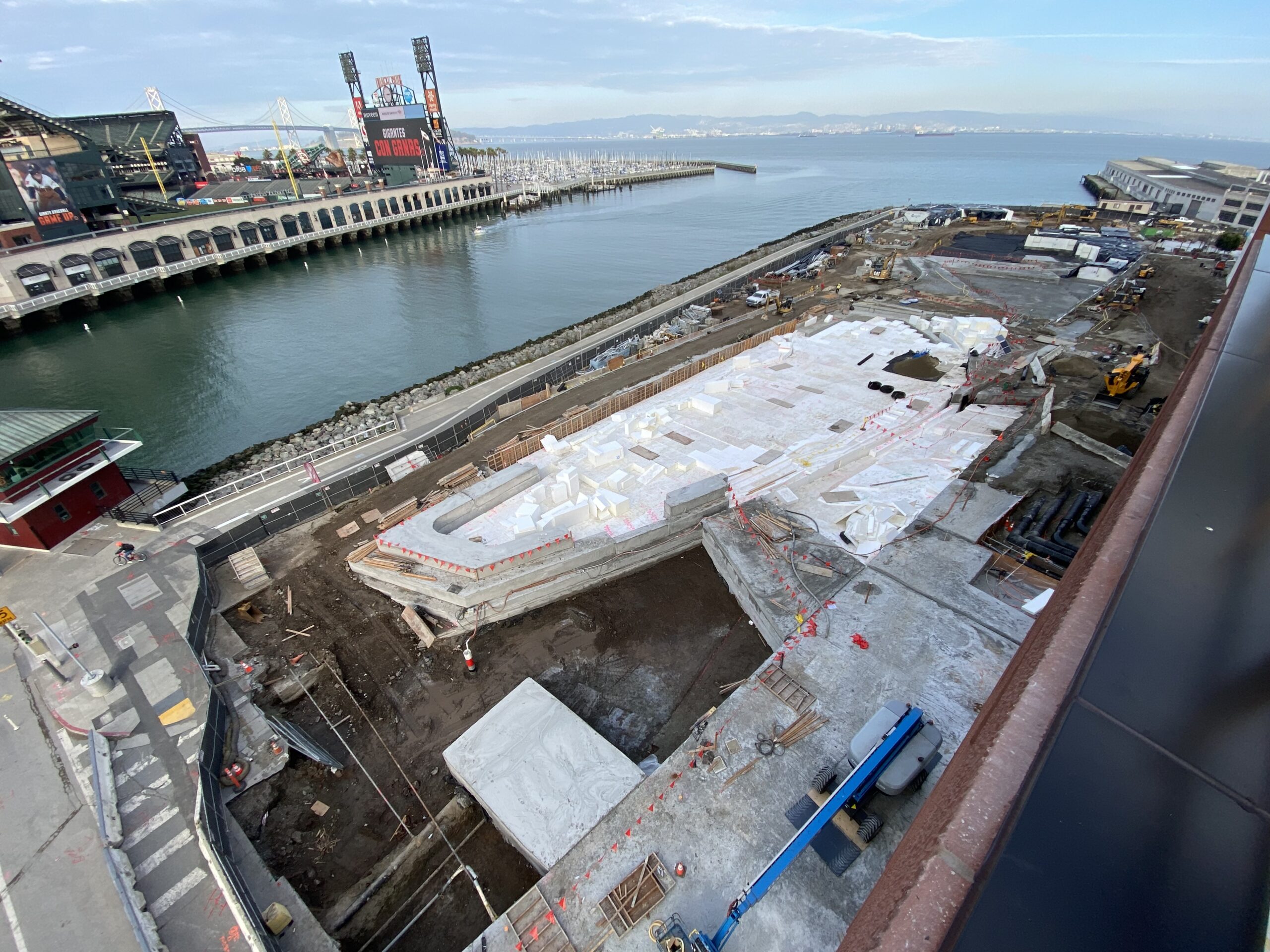In the realm of foam block construction, whether it’s used for insulation, roadways, landscaping or commercial buildings, the term “Styrofoam” is often used and misused when referring to expanded polystyrene (EPS) foam blocks. Styrofoam is actually a trademarked word under the Dow Chemical Company that technically refers to closed-cell, extruded polystyrene foam (think foam coffee cups, takeout containers and packing material). However, this extruded polystyrene is often mistakenly used when talking about expanded polystyrene foam which is similar yet different in many ways. If you refer to Styrofoam when you are actually looking for the construction project material known as expanded polystyrene foam blocks, you most definitely will not be getting what you pay for.
As the experts in EPS foam block construction, we’re here to set the record straight about extruded vs expanded polystyrene so you can be better informed as a consumer in the type of materials you invest in for your next project. Here are 5 differences between Styrofoam blocks and EPS foam blocks.
Extruded vs. Expanded Polystyrene
The major difference between Styrofoam and EPS foam blocks is that Styrofoam is made from extruded polystyrene (XPS) while EPS foam blocks are made of expanded polystyrene. So, what’s the actual difference between extruded and expanded? Both are polystyrene foam products made from polystyrene resins but they are manufactured into sheets and blocks very differently. For EPS foam blocks, the blowing agent that is used to form the final product leaves the polystyrene beads quickly which works to create thousands of tiny cells filled with air. The blowing agent used to make XPS or Styrofoam products stays embedded in the beads for long periods of time, thus preventing and reducing air flow through the material. This gives XPS foam a lower moisture absorption rating compared to EPS. To add, XPS is made using a continuous extrusion process that creates a closed-cell form while EPS is manufactured through an expansion process that molds spherical beads and uses heat and pressure to fuse the foam product together.
Physical Attributes
There are many differences in physical attributes of Styrofoam vs EPS foam blocks. For one, the color is different. You will often see original Styrofoam sheets in a blue color while EPS foam blocks start out as white, unless custom dyed. EPS foam is lightweight but has a high-density which makes it stronger and more durable than Styrofoam. Many will look to EPS as a go-to fill material thanks to its compressive strength and ability to withstand heavy loads over long periods of time. Its permeability rating is higher than Styrofoam, which makes it more optimal for water and mold resistance.
Environmental Impact
Recyclability is another major differentiating factor between EPS foam and Styrofoam. While Styrofoam is not recyclable, expanded polystyrene is extremely recyclable. It’s considered very green which bodes well with the ever-growing trend toward green construction. The expanded polystyrene is made up of organic elements which means it doesn’t contain toxic chemicals like chlorofluorocarbons (CFCs) or hydrochlorofluorocarbons (HCFCs). Last but not least, the blowing agents used to make EPS are exponentially less harmful to the environment than the ones used to manufacture Styrofoam.
Uses
When it comes to using Styrofoam or EPS foam blocks and sheets, EPS is the more ideal option for construction projects that call for durability and resistance against harsh external conditions. Its applications include soil stabilization, road banks, sheathing, below grade applications, insulation, tapered roof insulation, pools and landscaping.
Performance
EPS foam blocks tend to outperform XPS foam blocks. The materials also differ slightly in R value, which is the measure of heat flow resistance, aka – thermal insulation effectiveness. EPS tends to outperform XPS in terms of long-term R-value—meaning, it is a better insulation product. EPS geofoam’s drying potential under severe conditions allows it to continue to carry out thermal resistance over time. Additionally, EPS geofoam price is generally lower in cost which brings higher value when weighing out its durability and effectiveness as a fill material.
The next time you hear Styrofoam used to refer to EPS geofoam, you’ll understand the specific differences between the two. The differences ultimately stem from the way they are manufactured, with Styrofoam formed by an extrusion process and EPS form via expansion. The unique formation gives Styrofoam and EPS different attributes. While both Styrofoam and EPS sheets and blocks are often used interchangeably as construction fill and insulation material, there are some big advantages of using EPS in specific situations. For those looking for a lower-cost insulation material that is more resistant to moisture damage and more durable against harsher external factors like weather and compression, EPS geofoam blocks is the better option.
Geofoam International is here to help with all your EPS foam block construction needs. From educating you on the exact differences and advantages EPS geofoam has over other types of construction material to providing you with custom foam blocks and services to meet your needs, look to Geofoam International.









